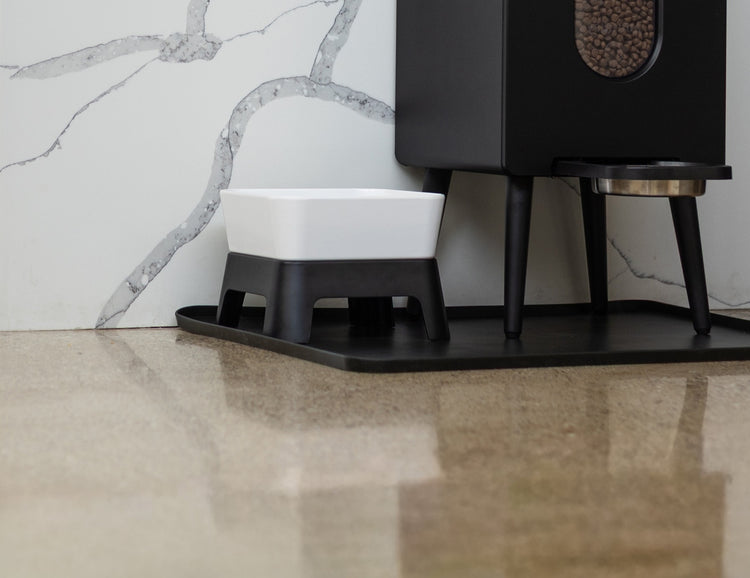Does Wet Dog Food Cause Loose Stools? Exploring the Connection
- Houndsy
Table of Contents
- Introduction
- Understanding Wet Dog Food
- The Digestive System of Dogs
- Does Wet Dog Food Cause Loose Stools?
- The Role of Ingredients in Wet Dog Food
- Tips for Choosing the Right Wet Dog Food
- Conclusion
- FAQ
Introduction
As devoted pet parents, we all want to ensure our furry friends are happy and healthy. Did you know that one of the most common concerns for dog owners is their pet’s digestive health? In fact, a staggering 34% of dog owners report that their pets experience digestive issues at some point. This can lead us to question our feeding choices: Does wet dog food cause loose stools?
The topic of wet versus dry dog food is a hotly debated subject among pet owners. Wet dog food is often praised for its appealing taste and higher moisture content, making it a favorite among many dogs. However, its impact on bowel movements is a common concern. Throughout this blog post, we’ll delve into the relationship between wet dog food and loose stools, explore the reasons behind digestive upset, and provide insights on how to make the best feeding choices for your beloved pet.
By the end of this article, we hope you’ll feel more informed about wet dog food and its effects on your dog’s digestive health, empowering you to make educated decisions about your pet's diet. We’ll also reflect on our own feeding routines—what works, what doesn’t, and how we can enhance the feeding experience for our pups.
Understanding Wet Dog Food
What is Wet Dog Food?
Wet dog food, often found in cans or pouches, is typically made from meat, grains, and a variety of other ingredients, all mixed with water or broth. Its primary appeal lies in its rich flavor and aroma, which many dogs find irresistible. Unlike dry kibble, wet food contains a higher moisture content, which can be beneficial for hydration, especially in dogs that may not drink enough water.
Nutritional Value
When we consider the nutritional aspect of wet dog food, it’s essential to acknowledge that not all wet foods are created equal. High-quality wet dog foods can provide balanced nutrition, containing protein, fats, vitamins, and minerals necessary for a dog’s health. However, many commercially available brands include fillers, artificial preservatives, and low-quality ingredients that could lead to digestive issues.
As a responsible pet brand, we encourage thorough label reading when selecting wet food for our dogs. Look for brands that prioritize high-quality, recognizable ingredients for optimal health benefits.
Types of Wet Dog Food
There are several types of wet dog food available on the market, including:
- Complete Meals: These are nutritionally balanced and can serve as the sole diet for your dog.
- Mixers: These can be added to dry kibble to enhance flavor and moisture without compromising nutrition.
- Treats: Some wet foods are designed specifically as training treats or rewards.
Each type of wet dog food serves a different purpose, and understanding these distinctions can help us choose the best option for our pets.
The Digestive System of Dogs
How Digestion Works in Dogs
To better understand whether wet dog food could cause loose stools, we must first consider how a dog’s digestive system functions. Dogs are omnivores, meaning they can digest both animal protein and plant matter. Once ingested, food travels from the mouth through the esophagus and into the stomach, where it’s broken down by stomach acids and enzymes. The partially digested food then moves into the small intestine, where most nutrient absorption occurs, before it ultimately reaches the large intestine, where water is reabsorbed and stool is formed.
Factors Influencing Digestive Health
Several factors can influence a dog’s digestive health, including:
- Dietary Changes: Sudden changes in diet can shock a dog’s system, leading to gastrointestinal disturbances.
- Food Quality: Low-quality ingredients can contribute to digestive upset.
- Sensitivities or Allergies: Some dogs may have specific food intolerances or allergies that can cause loose stools.
- Stress: Changes in environment, routine, or lifestyle can impact a dog’s digestion.
Understanding these factors can help us identify the root causes of digestive issues, allowing us to make informed choices about wet dog food.
Does Wet Dog Food Cause Loose Stools?
The Myth Debunked
While many dog owners worry that wet dog food directly causes loose stools, the truth is that the food itself is not always the culprit. Instead, it's the quality of the ingredients and how we transition our dogs to new foods that can lead to digestive issues.
In fact, some studies suggest that wet dog food can actually be easier to digest for certain dogs, especially for puppies, seniors, or those with dental issues. The key is ensuring that the wet food we choose is high quality and suitable for our dog's specific needs.
Transitioning to Wet Dog Food
One of the most common reasons we see loose stools when introducing wet dog food is the sudden switch from dry kibble to a wet diet. Dogs thrive on consistency, and a sudden change can lead to gastrointestinal upset. To prevent this, we recommend gradually introducing wet food into our dog’s diet over a period of 7 to 10 days. Here’s a simple transition plan:
- Days 1-3: Mix 25% wet food with 75% dry kibble.
- Days 4-6: Mix 50% wet food with 50% dry kibble.
- Days 7-10: Mix 75% wet food with 25% dry kibble.
- After Day 10: If all goes well, your dog should be fully transitioned to a wet food diet.
Identifying Food Sensitivities
If our dogs experience loose stools after transitioning to wet food, it’s essential to consider potential food sensitivities or allergies. Common allergens include certain proteins, grains, or preservatives. Keeping a food diary can help us track our dog’s reactions and pinpoint any problematic ingredients.
The Role of Ingredients in Wet Dog Food
High-Quality vs. Low-Quality Ingredients
The quality of ingredients in wet dog food plays a critical role in our dog's digestive health. High-quality wet dog foods typically contain real meat as the primary ingredient, along with whole grains, vegetables, and fruits. Conversely, lower-quality brands may use fillers, by-products, and artificial additives that can irritate our dog’s digestive system.
As pet lovers, we should always opt for brands that prioritize transparency and quality in their ingredients. At Houndsy, we're committed to providing quality products that enhance the feeding experience and promote pet well-being.
The Impact of Moisture Content
Wet dog food’s higher moisture content is generally beneficial for hydration, especially for dogs that may not drink enough water. However, it's essential to balance wet food with dry kibble in some cases, as the gritty texture of dry food can help maintain dental health.
Tips for Choosing the Right Wet Dog Food
Research and Recommendations
When selecting wet dog food, we should consider the following:
- Consult with a Veterinarian: They can provide personalized recommendations based on our dog's health needs.
- Read Reviews: Look for brands with positive feedback from other pet owners and veterinarians.
- Check Nutritional Labels: Ensure the food meets AAFCO (Association of American Feed Control Officials) standards for nutritional adequacy.
Introducing the Houndsy Kibble Dispenser
At Houndsy, we believe that the feeding experience should be both functional and beautiful. Our flagship product, the Houndsy Kibble Dispenser, allows for perfect portions every time, eliminating the hassle of messy feeding. With an ergonomic design that stands at a comfortable height, it simplifies the feeding process while enhancing our home decor.
If you’re looking to elevate your dog’s feeding experience, explore our Houndsy Kibble Dispenser today!
Conclusion
In summary, wet dog food does not inherently cause loose stools. Instead, it’s essential to consider the quality of ingredients, how we transition our dogs to new foods, and individual sensitivities. By choosing high-quality wet dog food and introducing it gradually, we can minimize the risk of digestive issues and provide our dogs with a nutritious and enjoyable diet.
As we continue to prioritize our dogs' health and happiness, let’s reflect on our feeding routines. Are we providing the best options for our furry friends? By investing in high-quality wet dog food and innovative feeding solutions like the Houndsy Kibble Dispenser, we can ensure that our pets thrive.
FAQ
1. What should I do if my dog has loose stools after eating wet food?
If your dog experiences loose stools after eating wet food, consider gradually transitioning them to a new diet and monitor their reaction. If the problem persists, consult your veterinarian to rule out any underlying health issues.
2. Can I mix wet and dry dog food?
Yes, mixing wet and dry dog food can provide a balanced diet and enhance flavor. Just be sure to monitor your dog’s reaction to the combination.
3. How can I tell if my dog is allergic to certain ingredients in wet food?
Keep a food diary to track any changes in your dog’s behavior or digestion after introducing new foods. If you suspect allergies, consult your veterinarian for guidance on an elimination diet.
4. Is there a risk of dental issues with wet dog food?
While wet food does not provide the same dental benefits as dry kibble, regular dental care, including brushing and dental chews, can help maintain your dog's oral health.
5. How can I ensure my dog is getting enough hydration on a dry food diet?
If your dog eats primarily dry food, ensure they have access to fresh water at all times. Adding wet food as a mixer can also help increase their moisture intake.
Feel free to explore our Houndsy Kibble Dispenser and enhance your dog’s feeding experience today!













